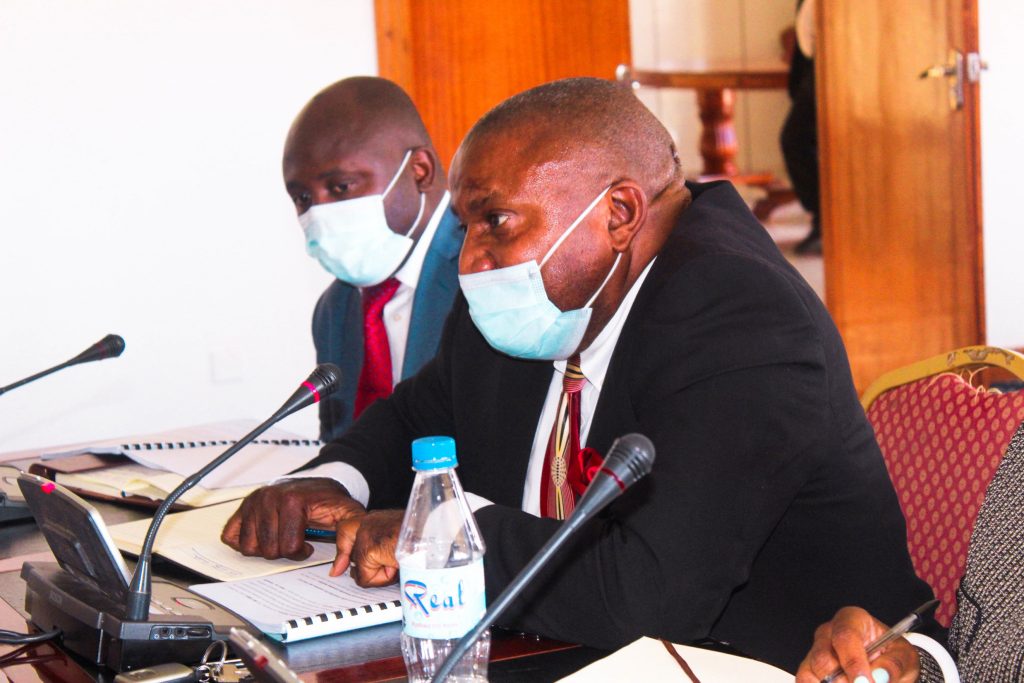
Business
Malawi Govt. outlines plan to boost manufacturing industry
September 14, 2021 / Wahard Betha

The Malawi Government has unveiled its plans to support the country’s manufacturing sector as a way of achieving the pillar of industrialization contained in Malawi 2063 vision.
In his presentation when he appeared before Parliament’s Public Accounts Committee (PAC), Principal Secretary in the Ministry Peter Simbani told the members of parliament that the Government is initially reviewing the industry’s legal framework.
Simbani said understanding that industrialization is one of the MW2063 pillars, government unbundled the Ministry of Industry from the Ministry of Trade, Industry and Tourism to fully champion the agenda of industrializing the country.
He said: “First of all we want to look at our legal framework. On top of that, we want to look into strategies that we have been having as a country so that going forward we develop policies and strategies that should really push us to what the vision tells us so that time by 2063 we become a middle income country.”
“Secondly, we are looking at rural industrialization strategy which is focusing on those rural areas that produce marketable products for example tangerines in Mwanza.”
“We want to organize people in those areas to form cooperatives so that they have added force to competently negotiate prices for their products.”
“We will also create secondary cooperatives that will be buying from these primary cooperatives. We have full package on how we want to move this agenda to where we want to be.”
He stressed that such Government interventions will see the Ministry’s contribution to Gross Domestic Product (GDP) increasing from the current nine percent to 12 percent by 2030.
Simbani said the Ministry’s interventions will focus on supporting growth of both large and small scale industries.
On large scale industries, the interventions will include installation of Special Economic Zones (SEZ) of which the Government has already identified sites in Area 55 in Lilongwe; Matindi and Chirimba in Blantyre and; Dunduzu in Mzuzu.
The Malawi Government is planning to construct factory shells in the SEZ and invite investors to come and invest in specific areas to start producing value added products.
He said: “For those that will come and be operating in these economic zones, they will enjoy incentives that the government is going to come up with.”
“Let me tell you that a bill is being prepared and it should come to parliament and once it is approved, gazetted and operationalised, all the incentives that are required for the investors to come in and operate will be in place.”
For the SEZ to start taking shape, the Ministry of Industry requires about MK5-billion from the treasury to compensate people in all identified sites.
In his recommendations, PAC Chairperson Shadreck Namalomba queried the Ministry on the progress on the development of industry parks saying there is no progress seen on the ground.
Namalomba stressed that the Ministry is not showing commitment in the development and that it is not giving proper projections on how some of them will commence.
He said: “This is the Ministry of Industry and we are saying what is it that you are doing to take us there where the MW2063 wants us to be.”
“We want industrial parks in the country, when are you coming to say here are the parks and we are commissioning them?”
“This is the Ministry that needs to give Malawians radiate confidence out there, Malawians need to see what they are doing. Right now I can say there is much more that they need to do.”
In the MW2063 Agenda, industrialization is earmarked to transform the country’s economy from being predominantly consuming and importing to predominantly producing and exporting.
The manufacturing sector will have strong backward and forward linkages with agriculture, mining and services sectors.
Malawi will pursue an industrial revolution driven by strong human capital and utilization of local resources.
Industrialization has stagnated in Malawi mainly because of high production costs due to: Inefficiencies in energy and transport; poor standards leading to non-competitive products on international markets; lack of appropriate skills and uptake of technology; high costs of doing business and deficient enabling infrastructure; low access to export markets; governance challenges with regard to policy making and implementation; and non-conducive environment for the growth of small and medium scale enterprises (SMEs), among other challenges.































